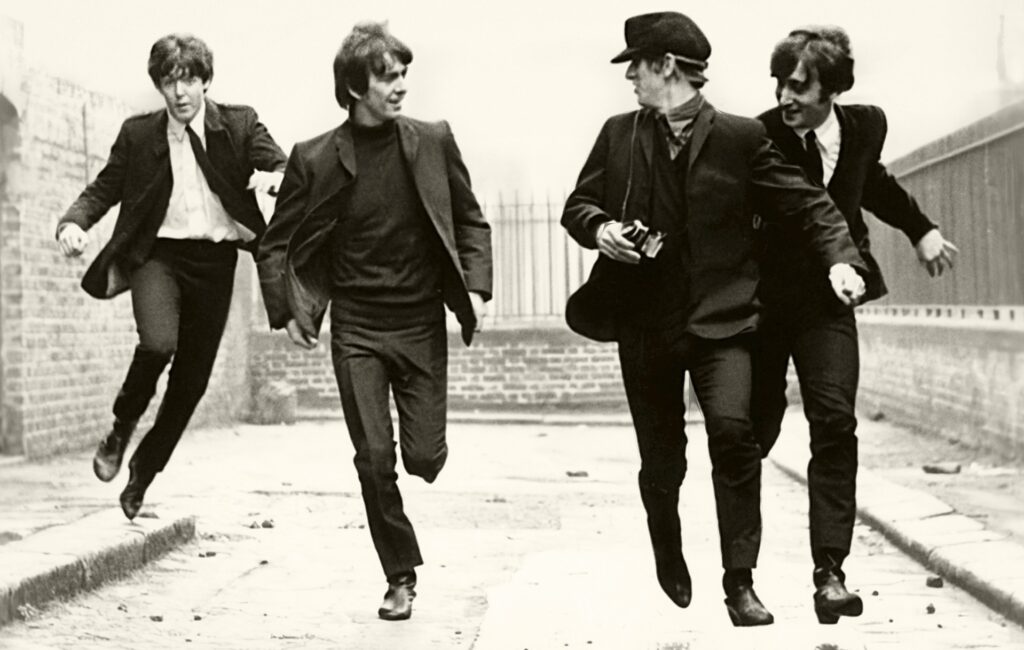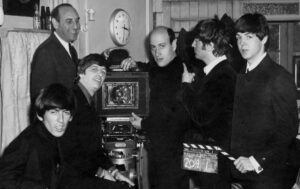By Ray Bennett
Sixty years ago today, a little rock’n’roll movie titled ‘A Hard Day’s Night’ starring the Beatles was released in the U.K. Their first album had come out less than eighteen months earlier, their singles were topping the charts and their first trip to America created a storm when they appeared on ‘The Ed Sullivan Show’. United Artists, their record label, decided to cash in with a feature film.
John Lennon, Paul McCartney, George Harrison and Ringo Starr happened to love an eleven-minute short film titled ‘The Running, Jumping and Standing Still Film’ starring Peter Sellers and Spike Milligan. It was directed by American filmmaker Richard Lester, who had worked with Sellers on TV versions of the radio classic ‘Goon Show’ and directed a feature titled ‘It’s Trad, Dad’, so they were pleased when he agreed to make their film.
When I interviewed him many years later, Lester told me that United Artists just hoped to make a fast buck. ‘Make it as quickly as possible so it can get into cinemas before they vanish,’ he was told.
Shooting began in March 1964 and the film had to be in cinemas by July. ‘No arguments,’ Lester said. ‘It didn’t matter whether we’d finished or not, that was the deal and we stuck with that.’
Director and writer Alun Owen went to Paris with the Beatles for their first concert at the Olympia. They stayed on the same floor with them at the Hotel George V.
‘In essence, the film was writing itself,’ Lester said. ‘We literally came back from there and said we’re just going to do that and we were left alone to do it. It didn’t really matter. Nobody bothered us or got in the way. There was only one man from United Artists, if memory serves me, who read the script and said it was good and to go ahead. We were working in such a rush that we’d completed the film before anybody saw any of it. We finally had a screening and everybody liked it.’
‘A Hard Day’s Night’ was a massive hit so a sequel was inevitable so ‘Help!’ followed one year later and was another hit. ‘Having made a film where we showed everything about their work,’ Lester said, ‘here comes the second film and we don’t have the opportunity to show what these people do in their spare time. It would terrify the audience if you showed what they did with girls or with strange substances they smoked or whatever.’
He was faced with making a documentary film in which the Beatles could not be shown at work or at play. ‘What in god’s name can you do?’ Lester said. ‘What was left was to make these real people victims of a fantasy. All these years later, I still don’t know what else we could have attempted even though it meant surrounding the boys with characters. John Lennon said, “We’re extras in our own fucking movie.’
Lester went on to make many terrific films including ‘Petulia’, ‘The Three Musketeers’, ‘Superman II’, ‘Juggernaut’ and my personal favourite, ‘Robin and Marian’. He was coming to the end of his career when I spoke to him in 1984 and he had fond memories of working with the Beatles.
‘The moment you met the Beatles,’ he said, ‘you knew they were quite extraordinary. John Lennon was probably one of the four most interesting people I’ve ever met … one of the most incisive brains. A deeply troubled man but a man who had an enormous impact on my life.’
The other three? ‘I’d put Spike Milligan as one of them and Buster Keaton as another,’ Lester said. ‘I worked with Buster on “A Funny Thing Happened on the Way to the Forum” and his work affected mine over the years. He’s the one great teacher for me as a film director. I was very moved and fascinated to work with Richard Pryor on “Superman III”. Again, a man who has seen his share of troubles but a man of enormous charm, ability and sensitivity.’



Love this Ray. Lester did an incredible job, caught them at just the right time. Was this for a “Big Screen” interview?
Yes, I’m pretty sure it was.
Any idea who was Spike and who was Buster, Ray?